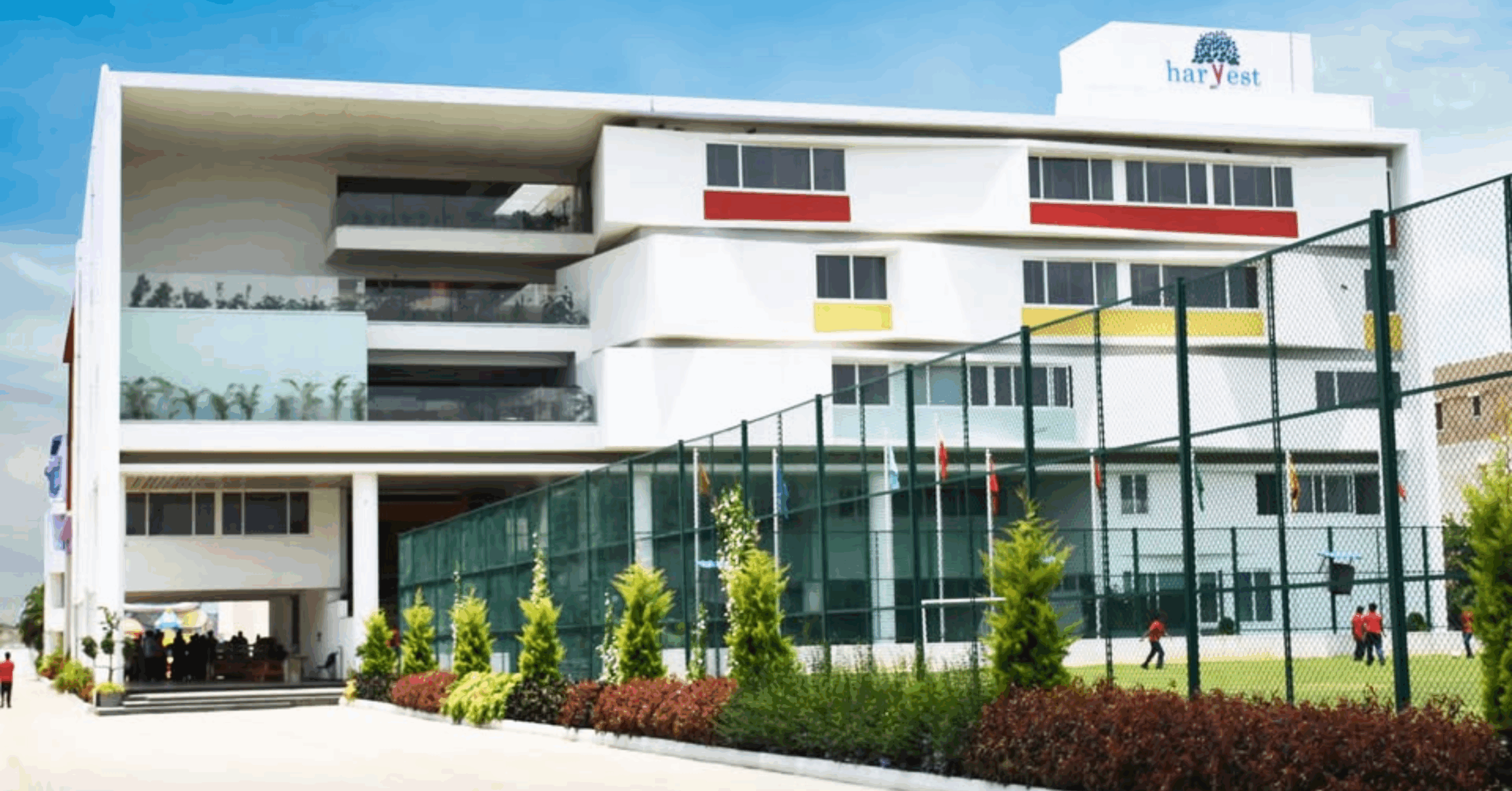Navigating the School Landscape in Bengaluru’s HSR Layout — A Focus on Quality Education and the Role of Harvest International School
When parents embark on the important journey of choosing a school for their child, location, curriculum, faculty, infrastructure and philosophy all play vital roles. In the dynamic area of HSR Layout in Bengaluru—one of the city’s fastest-growing residential suburbs—these factors assume special significance. Among the many institutions in this zone, Harvest International School stands out as a benchmark of international-style schooling, making it a useful reference point when evaluating Schools In Bangalore Hsr Layout.
1. Why HSR Layout is a prime zone for schooling
HSR Layout (short for Hosur-Sarjapur Road Layout) has evolved from a planned residential enclave into a bustling suburb that blends high-rise living, green parks, commercial stretches and well-connected infrastructure. For families seeking schools, this means two clear advantages: proximity to schools that meet modern standards, and a neighbourhood environment that supports holistic growth outside the classroom.
According to recent listings of schools in HSR Layout, there are over 90 institutions offering a range of curricula (CBSE, ICSE, international boards) and a variety of fee-structures and teacher-student ratios. Many of these schools highlight strong infrastructure, technology integration, sports and arts facilities, which aligns with the expectations of parents in this well-connected suburb.
With such choices available, it is important to have a clear framework for comparing schools—understanding academic boards, class sizes, teacher-student ratios, extra-curricular offerings, and school culture.
2. The role of curriculum and pedagogy
One of the first filters in school-selection is the curriculum: whether the school follows a national board (such as the Central Board of Secondary Education – CBSE) or an international/IB style board, or a blend of both. The choice often depends on the family’s aspirations—whether they envisage the child pursuing higher education in India, abroad, or having flexibility.
For instance, Harvest International School emphasises both CBSE and IB programmes in its various campuses, positioning itself as a school that “creates a diverse and inclusive learning environment” and aims to nurture globally aware citizens. This kind of hybrid approach is becoming more common in HSR Layout schools, reflecting global trends in schooling.
But curriculum is only part of the picture: pedagogical methods matter. Schools that emphasise experiential learning, critical thinking, collaborative work, and value creation (not just rote academics) tend to stand out. Harvest, for example, underscores its “learner-centred approach and dedication to student well-being”. When visiting schools in HSR Layout, parents should ask: How are concepts taught? How are students encouraged to inquire, collaborate, present, reflect? Do assessments go beyond written tests? Are there project-based activities or inquiry labs?
3. Infrastructure, teacher-student ratio and holistic growth
In a high-growth sector like HSR Layout, the “brick and mortar” factor still matters. Many schools boast modern labs, libraries, sports zones, performing-arts spaces and tech-enabled classrooms. For example, one school in HSR describes its campus as being equipped with modern computer and science labs, an extensive library and play areas including a skating rink.
Harvest International School likewise speaks of “innovative labs”, “comprehensive library”, “physical activities like karate, yoga, basketball” and a well-rounded educational experience.
Teacher-student ratio is another important metric: smaller class sizes support personalised attention. Industry sources for HSR Layout list schools with ratios like 15 :1, 20 :1, even 31 :1 in some cases.
Holistic growth also means the school encourages social emotional learning, values, community and citizenship. Harvest explicitly states that they “shape … good human beings who can confidently take on the world”.
Thus when evaluating schools in HSR Layout, look beyond marks and ask: how is the student’s character formed? How do they support emotional wellbeing? How robust are sports, arts, leadership programmes?
4. Proximity, convenience and family fit
One big practical factor is proximity. In a busy city like Bengaluru, commuting matters. HSR Layout’s internal sectors and layout mean that many schools are within commuting distance for parents living in the area. This reduces stress for both students and families. Data suggests that HSR Layout hosts multiple schools across its sectors—parents can often drive or take the school bus within a reasonable radius.
Additionally, pick a school whose timing, extracurricular schedule, transport and parent engagement model fits your family’s rhythm. Schools like Harvest include transport policies, resource-policies, attendance and leave policies that show formal systems are in place.
Also consider your child’s personality, the sibling dynamic, and what environment will make them thrive—whether a bigger school with many peers, or a more intimate environment with fewer students per class.
5. Understanding fees, admissions and transparency
With so many quality schools in HSR Layout, fees vary considerably depending on the board, grade, infrastructure and brand value. For example: some schools list monthly fees of ₹14,000-₹20,000 (for select grades) while junior levels may be significantly less.
Harvest International School mentions a teacher-student ratio of 1:10, 2,400+ students enrolled, and 200+ experienced teachers. While these numbers help one gauge scale, parents should still ask for full fee structure breakdown, extra-curricular cost, transport cost, uniform cost, admission one-time charges, and future escalation. Also query cancellation policy, TC (transfer certificate) process, and contract terms (especially relevant in fast-moving suburbs).
Transparency is key. Reputable schools will provide their recognition certificates, policies (fire safety, building safety, NOC from education board) and parent help-desk functions (Harvest lists a Parent’s Helpdesk).
6. Harvest International School as a benchmark
Using Harvest International School as a reference helps illustrate what many families in HSR Layout are seeking in a modern school. Its strengths:
-
Clear emphasis on holistic development (intellectual, emotional, social).
-
Both Montessori (for early years) and national/international curricula (CBSE, IB) for older years.
-
Strong infrastructure: labs, library, performing arts, sports, safety systems (CCTV coverage).
-
Multimedia resources, clearly laid-out admission process, online enquiry form.
While each school will differ, Harvest exemplifies the standards many parents in HSR Layout are looking for. When you visit other schools you’re considering, you might ask: Does this school match or exceed such standards? What differentiates it?
7. Practical checklist for parents in HSR Layout
Here’s a suggested checklist for parents selecting a school in HSR Layout:
-
Visit the campus(s) – see student-work displays, classrooms, labs, play areas.
-
Ask about teacher attributes – qualification, training, continuity, attrition.
-
Request demo lessons or observe classes to gauge pedagogical style.
-
Examine the curriculum structure – in what grades is CBSE, or IB, or other boards offered? How seamless is the progression?
-
Confirm the teacher-student ratio and what extra help or remedial classes are provided.
-
Inspect transport arrangements – are the buses GPS-enabled, safe? What is the commuting time?
-
Ask about fees clearly and observe the full cost (not just tuition).
-
Review extra-curricular offerings: sports, arts, clubs, student leadership, community service.
-
Understand parent involvement: Are there regular parent-teacher meetings? How transparent is reporting?
-
Review safety and wellness: medical room, counselling, child-protection policies, CCTV, fire & building certificates.
-
Talk to current parents (in that school or previous alumni) for real feedback.
-
Consider future trajectory: How is the school positioned for higher grades, for university preparation, for global exchange?
8. Conclusion: Making the right choice
In the bustling educational landscape of HSR Layout, Bengaluru, parents are spoiled for choice—but that also means the decision needs careful deliberation. A school that works well for one child may not for another; fit matters. While curriculum boards, infrastructure and brand name are important, perhaps the most critical question is: Will this school help my child grow, thrive and become the best version of themselves?
Using Harvest International School as a benchmark gives a helpful reference of what holistic, modern schooling can look like. But you should evaluate each school you consider on its own merits and against your child’s needs and your family context. Proximity matters, but so do quality, culture, value system, cost and long-term alignment.







